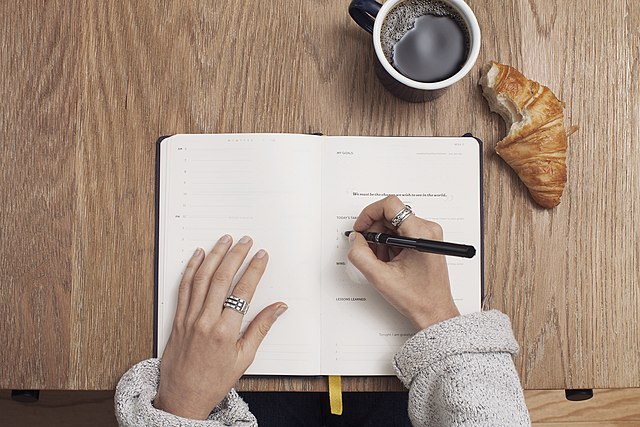
How a Journal can Help with Life, Studies and Everything Inbetween
Keeping a diary or writing a journal has been a statement about the individual for the centuries. It has offered insights into individual lifestyles, affluence, mental health, and artistic processes. It has also held the key to an understanding of our social and individual histories in ways which the authors could never have imagined.
A historical viewpoint is well and good but the recent trend in journalling seems to imply that this well-known activity could be utilised for the benefit of the individual in the present rather than simply for the amusement or enlightenment of future generations.
It seems like a simple concept, and in many ways it is, but there are various different ways in which one can journal and they all have particular focuses on them. Therefore it is essential to find the method that suits the outcome, in order to be supported and manoeuvred in that particular direction. Journalling is best created as a solitary process that occurs at a particular time of the day and is not to be viewed by another.
Traditional/linear Diary Journal
Writing a daily account of life can offer a range of insights into the way an individual thinks, eats, sleeps, and feels across any range of time. The important aspect of this is to consider how to format the journal as an aid to supporting the focus, no matter how broad or how specific it is. Traditional diary writing might have an external focus on things and events, whilst process journals will focus on the internal.
Bullet Journalling
This is a process that has become very popular in recent years. It offers the individual a sort of road map for journalling. The parameters and key with which to write are already set up, providing immediate means to begin documenting life, and later an ease to look back and identify patterns of behaviour. The important aspect of bullet journalling is its speed and ease. There is no mandated length of time to write and once learnt the key makes it a kind of drawing a drawing as well as a thinking process.
Morning Pages Journalling
This style of journalling was popularised by Julia Cameron in her book The Artist’s Way, and offers a space for pure conscious/unconscious downloading of emotional data. The idea is to sit with 3-sides of A4 blank paper for 30/40 minutes and write everything that comes to mind. No judgement and no looking, for the first few weeks at least. This is an ‘old skool’ data dump and has no time for finesse. Sounds terrifying?! Well, in order to see this as a viable option, there is the possibility to sit and write “I’m terrified” or “I have nothing to say”, until something shifts. And it will. After which everyone finds that their thoughts will flow surprisingly unhindered.
Tactile/Scrap Journalling
This term refers to the method of filling a specific book with physical bits and pieces -ticket stubs, images cut from a magazine, handwritten notes, pressed flowers- and then considering what they mean and why they are impactful. It creates the possibility of an interwoven, personal narrative.
Focus Journalling
Rather like a different form of meditation, this style can use writing to focus on positive aspects of life and create a holding space for them. It has become popular in recent years to focus on gratitude as a, sadly, less considered emotion. Individuals take time in the day to write a list of the things they are grateful for, people they have gratitude for knowing, or aspects of themselves that they are grateful to acknowledge. This positive attention may take deeper root and develop into a stronger emotion. The process of consistent focus may help people to develop deeper levels of this or any other emotion or idea, causing it to arise more spontaneously as a result of the journalling focus.
Can I get an App with that?
As with every other part of our lives, today there are a multitude of apps to support developing the habit of writing a journal, because routine and habit are its cornerstones. Using an app is as valid as the tangible quality of pen and paper if it means it becomes part of a daily routine.
The important part of writing a journal is that it is more than simply a static account or diary of the minutiae, events, and emotions that occur in life. It is there to be interacted with, to hold precious information and ideas, not just to look at but to create an ongoing and interactive dialogue and derive further understanding and knowledge from it. Keeping a journal on an app means that it has a higher chance of being kept close 24/7 and will therefore be used at home or away.
So Why Journal?
Finding a way to journal that suits the individual is essential and offers insights into ourselves as well as creative opportunities to plumb the depths of our being for inspiration. Journalling provides a safe space within which to take risks, try out some mental acrobatics, and pursue agile, sometimes downright strange, leaps of thought that might not have been possible without the regularity and sanctity of the process. This sort of ‘work’ not only benefits our emotional health but leaves us with extra head space for studies. If “creativity is intelligence having fun” then journalling is a wide open playground and all that is needed is the introduction of the paper, paints, blocks and, of course, colour to bring it alive. How you use it is up to you!